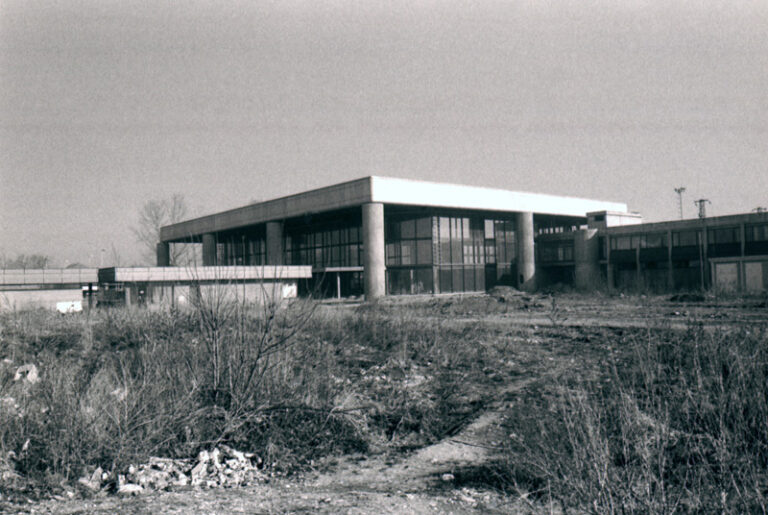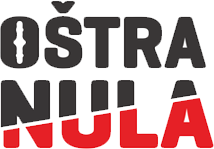Most of the tracks are overgrown with grass, rust-eaten passenger and freight cars sit abandoned, locomotives that neither take anyone nor go anywhere, and a railway station building—intended as a symbol of progress and urbanization in the spirit of Yugoslav modernist architecture—now serving only as a passage to the platforms. This is the current image of the Banja Luka Railway Station.
Few, even the most pessimistic among us, could have imagined that 152 years after the first railway line in Bosnia and Herzegovina was built between Dobrljin and Banja Luka, the second-largest city in our country would only have train connections to Dobrljin and Doboj.
Historical records show that the construction of the standard-gauge railway from Dobrljin to Banja Luka, spanning 104.3 kilometers, was ordered by Sultan Abdul Aziz Han. Due to the rapid industrial development in Bosnia and Herzegovina, the sultan mandated the construction of a railway from Constantinople to Vienna. In April 1869, an agreement was signed with a group of capitalists led by Baron Maurice Hirsch, granting them a concession to build the railway through Bulgaria, Rumelia, and Bosnia.
At the time, Serbia—under strong Russian influence—opposed the railway’s construction and did not allow it to cross its territory. By the autumn of 1871, when tracks were laid from Bosanski Novi to Prijedor, freight wagons for transporting gravel were shipped from Sisak by barge, and by November, the first two locomotives arrived.
The railway included 13 bridges, two of which were made of iron. The Banja Luka depot housed five locomotives: two produced by the Hanomag factory in Hanover, Germany, and three by the Tubize factory in Belgium. This railway was envisioned as part of the Constantinople mainline, which was intended to connect Vienna with Istanbul.
December 24, 1872, is considered the official date when the railway was opened for traffic.
Following the Congress of Berlin (1878), the Austro-Hungarian authorities restored railway operations between Banja Luka and Dobrljin in 1879. Since the railway station was located in the outskirts of the city, the Austro-Hungarians constructed an additional 3 kilometers of track, connecting the station to the city center. At that time, they also built the main railway station building, which today houses the Museum of Contemporary Art. In November 2007, the Commission to Preserve National Monuments of Bosnia and Herzegovina declared this building a national monument.
Banja Luka was not connected to Doboj and Sarajevo by rail until after World War II. In 1953, around 70,000 youth volunteers built the 95.1 km railway line between Banja Luka and Doboj, finally linking the city with Sarajevo.
The Banja Luka City–Banja Luka Suburb railway line was discontinued in 1968, making Banja Luka Suburb the city’s main railway station once again. Today, the small railway station remains, now serving as a restaurant and a reminder of times past.
During socialist Yugoslavia, Banja Luka’s railway station was not only a pillar of economic growth but also a hub connecting the city and western Bosnia with the rest of Europe.
For generations who grew up after the last war, it is almost impossible to imagine that, every day, a passenger train passed through Banja Luka, connecting Stuttgart (West Germany) with Ploče on the Adriatic coast. Or that finding a seat in its compartments was a challenge, regardless of the season. Or that people from Banja Luka traveled to the Adriatic coast by train.
A year before the Sarajevo Winter Olympics in 1984, Banja Luka was connected to the Bosnian capital via the Olympic Express, a train designed for business travelers that reached Sarajevo in three hours, allowing passengers to complete their work and return the same day. Back then, train travel to Zagreb and Belgrade was more frequent than bus travel.
During Banja Luka’s post-World War II industrial boom, the railway station played a crucial role as the city became the economic center of Bosanska Krajina.
Željka Zrnić, who spent her career as a freight cashier at the railway station, recalls that period as the “golden era of the company.”
“Goods arrived in Banja Luka from all over Yugoslavia and Europe, either as wagon loads or individual shipments, and we worked in shifts from 6 AM to 8 PM every day.”
She describes the immense workload, citing freight records from major companies such as Gorenje and Obod, emphasizing, “The financial transactions were enormous.”
Beyond handling freight, the railway station was connected by industrial tracks to Jelšingrad Steel Foundry, TAS Machine Tool Factory, Metal, Vitaminka, Univerzal, Unis, Incel, Vrbas, Žitoprodukt, Krajinapetrol, and the Jajce Bauxite Mine.
“Incel even had its own small locomotive,” Zrnić recalls. She adds that machinery and tools produced at TAS were shipped to Belgium and Russia.
“Railways are the heart of a country’s development, and Banja Luka’s entire economy depended on them,” Zrnić states firmly.
But of that industrial boom—which supported thousands of workers and their families—what remains today are demolished factory chimneys, abandoned halls, or construction sites turned into wedding and funeral halls, shopping centers, and residential buildings.
The war in Bosnia and Herzegovina marked the beginning of the railway’s decline. By 1992, the national railway was divided into separate entities, and Banja Luka’s station became part of Railways of Republika Srpska (ŽRS), with headquarters moving from Banja Luka to Doboj in 1996.
Though the railways in both Bosnian entities still function as public enterprises, their survival—especially ŽRS—depends on government subsidies rather than profitability.
The Dayton Peace Agreement envisioned a unified railway corporation, but it was never truly implemented. Instead, the railway infrastructure remains divided along clear ethnic and political lines, receiving little investment over the past three decades. Like everything else that could be split among nationalist parties, the railways remain fragmented, with no signs of economic interests prevailing over political divisions.
Attempts by Railways of the Federation of Bosnia and Herzegovina to establish passenger service on the Bihać–Banja Luka–Sarajevo route using Talgo trains were short-lived. Despite steady passenger demand, the train barely reached 30 km/h on certain sections in the Federation. Yet, it seemed that Republika Srpska authorities were merely waiting for an excuse to discontinue the service—just as they previously canceled the Zagreb–Sarajevo route.
The COVID-19 pandemic and the migrant crisis ultimately served as justification to abandon all inter-entity passenger railway services.
Between 1996 and 2011, the number of passengers on RS railways dropped to a fifth of previous levels, and by 2014, ŽRS had accumulated 263 million KM in losses. The lack of infrastructure development and declining passenger numbers have largely shifted travel to buses.
Restructuring of ŽRS began in 2017 with World Bank financial support, initially planned to conclude by 2021, but—like many projects in Bosnia and Herzegovina—it remains incomplete. The restructuring aimed to modernize and stabilize the company, including job reductions and operational reorganization.
By 2021, the number of employees had dropped from over 3,000 to 2,100, and today, only 1,900 workers remain, as many continue leaving due to low wages and poor conditions. Yet, while qualified technical staff departs, political appointees remain, including music teachers and meteorologists employed at ŽRS.
Given past privatization experiences in Republika Srpska, this restructuring could lead to the sale of profitable parts of ŽRS while the rest is dismantled, allowing politically connected individuals to acquire its assets at bargain prices.
Rail transport in Bosnia and Herzegovina is vastly overshadowed by road traffic, and without significant government support, its survival remains uncertain.
Until then, we are left with ŽRS’s latest announcement:
“The new 2024/2025 timetable takes effect on December 15, 2024. ŽRS will operate 27 local passenger trains on the following routes:
Doboj – Banja Luka – Doboj
Banja Luka – Novi Grad / Dobrljin – Banja Luka.”
So, after 152 years, have we come full circle—back to December 24, 1872?



